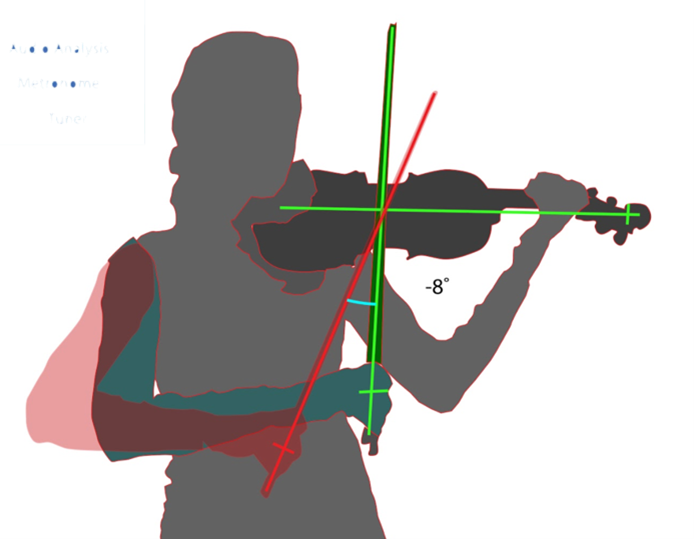Q-Violin - Smart Biofeedback System for Bowing Gestures and Techniques on the Violin
Overview
The aim of this project is to develop smart biofeedback system for the right arm motor schemas of violinists for the purpose of monitoring and training the various violin’s bow movements, gestures, and techniques. Music, like sports, is a highly competitive field that promotes long practice hours. Musicians require very good feedback loops and expert training to improve. The technique of violin playing, like that of golf or tennis, is highly visible to the trained eye. Although the left hand is responsible for pitch, the harder skill to master is that of the right hand – the bowing mechanics. The bow arm’s movements vary in extremely subtle ways and have their own governing laws of speed, weight, proximity to the bridge of the violin, hair angle (tilt), and trajectory of movement. The teacher/student apprentice model has been the primary, in fact the only, learning methodology for violinists for centuries. In this model, an expert teacher uses verbal critique and demonstration to teach one on one. Violinists use mirrors and video recording during independent practice, but an exact feedback mechanism for the mechanics of the bow has never been produced. When we as teachers say, “slow down the bow speed”, students are not actually able to quantify how much slower they are drawing the bow in their next iteration. This project contributes to the field of violin pedagogy and practice violin playing as there is currently no biofeedback system for this type of information of feedback information in practice and teaching.

This project aims to establish what is possible with an array of inertial sensors as well as camera-tracking techniques to support enhanced and data-driven learning. Can sensors help studying violinists better understand what their body is doing in space by rendering bow position, bow acceleration and bowing angles? Cheap, miniscule sensors are now available, and sports has demonstrated a wide array of biofeedback avenues that we can learn from. We aim to investigate which parameters can be easily measured and rendered in a meaningful form to a practicing violinist. We aim to explore recent machine learning tools (e.g., Graph Neural Networks) that are designed to precisely model the dynamics of physical activities. We believe these tools are worth exploring in modeling and capturing the bow movements of the various bow techniques. Moreover, these developed tools could be used in predicting the bow movement and give an early warning and tips to students.
Funding
- VCUArts Dean’s Faculty Exploratory Grant (2022)
Publications
Any opinions, findings, and conclusions or recommendations expressed in this material are those of the author(s) and do not necessarily reflect the views of the National Science Foundation.